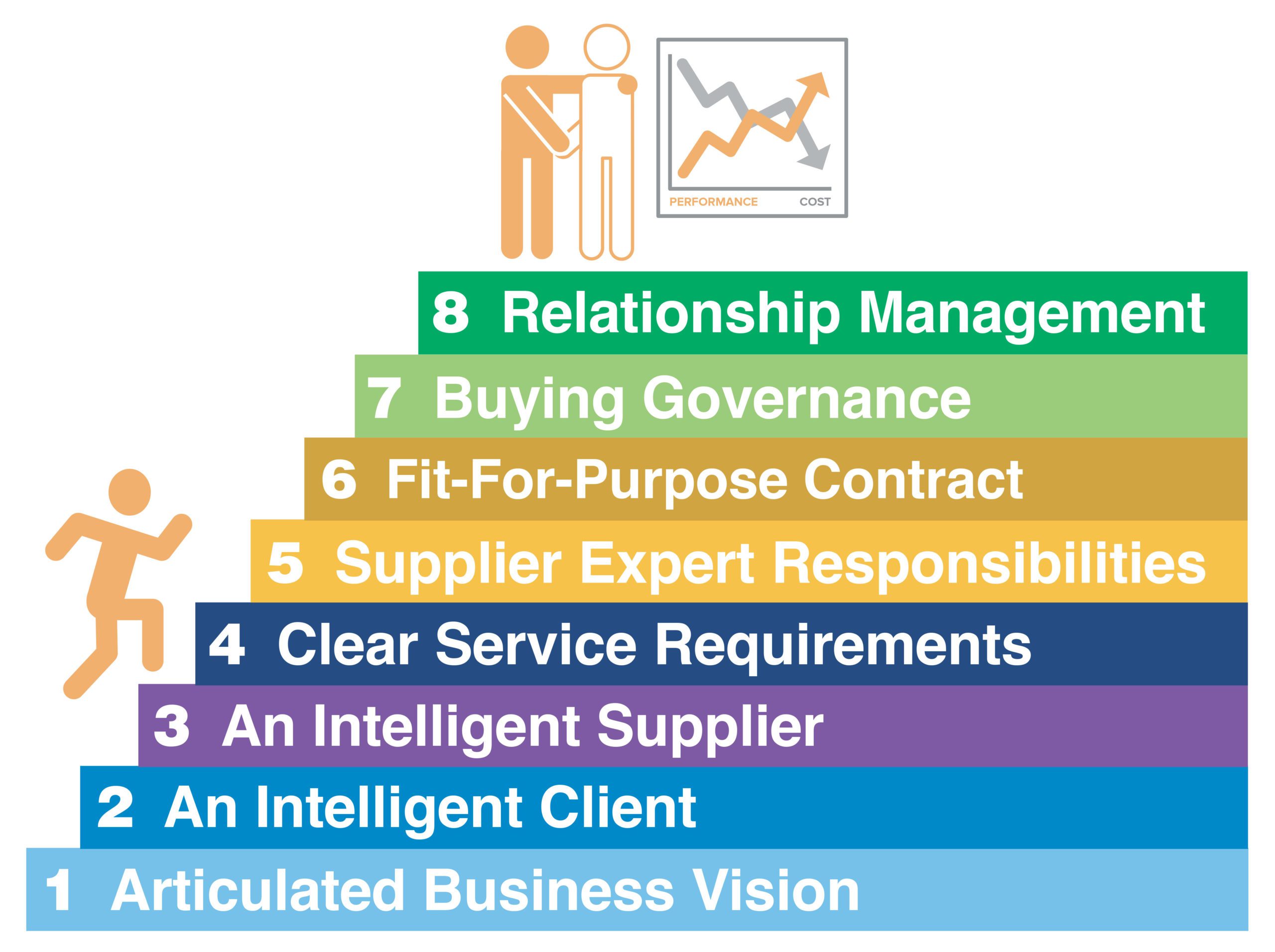New Supplier Relationship – Defining Your Requirements
What we deliver
-
Clarity of requirements. Our best in class service/solution requirements assures clarity in aligning your specific service/solution requirements to your business outcomes. They will be free of ambiguity and can be contractually relied upon.
How you will benefit
-
Reduced stakeholder uncertainty. The facilitation process and best in class service definitions puts key stakeholders at ease.
- Improved supplier visibility and advice. The Supplier gets much greater visibility of your expectations to provide you with better advice.
- Fitness-for-purpose certainty. Provides the foundations to contractually hold Suppliers accountable for that advice (to deliver the requirements) on an agreed and informed basis.
How the best organisations document their Requirements
A summary of what Requirements documentation should include
In the requirements you document for your prospective suppliers, it’s really important to communicate to them what outcomes and objectives you need to achieve organisationally, as a result of the service/solution you anticipate procuring from them.
In other words, explain that once you have implemented the service/solution and it is running successfully, what your organisation can now achieve that it couldn’t achieve prior to the successful implementation?
Articulate this in terms of time-frames, a spectrum of percentage improvements expected across each service/solution area and so forth. Quantify these objectives as best you can as it helps prospective suppliers understand the degree to which you have carefully considered your expectations and how you will measure them.
It is also helpful for prospective suppliers to get visibility of appropriate parts of your business case, visibility of the end-to-end anticipated procurement process, positive consequences of the solution being fit for its intended purpose and the negative consequences if the service/solution is found wanting.
In overview terms, the ‘holistic’ approach to documenting your requirements is to assure your prospective suppliers are appropriately informed and can contextualise their responses appropriately, the key aspects to include (more details in the specific bullets on this webpage), are:
- A ‘holistic’ executive view of how your organisation operates and your plans and objectives for the future
- Why you think you need to implement the solution service being procured
- An outline of the end-to-end procurement process itself so that the prospective suppliers fully understand the approach you are taking and why
- The business objectives your organisation wants to achieve, ideally as fully quantified as possible
- Example ‘Use Cases’ (business process operational flows)
- The negative impact of the solution procured on the organisation, if the solution/service is not fit for its intended purpose
- The prospective supplier selection process and what evidence the supplier can provide you with that will improve their chances of winning the bid
- How you will manage the performance of the supplier.
An outline of why you want to procure the new service solution
A clear and articulated explanation to the prospective supplier of why your organisation has decided to replace aspects of its service delivery and/or solution and how you came to that decision.
The details of the end-to-end procurement process
A full outline of the process including milestones, the client team involved, the contracting strategy and benefits realisation process.
High level business objectives to be achieved and their quantification
There is a clear organisational vision documented that outlines what hurdles the organisation will overcome and the objectives it will achieve once the service delivery is in place.
The objectives to be achieved clearly state what the objective is, how they align to the overall business outcome, when the objective needs to be achieved by and what degree of improvement is expected.
A high level outline of 'Use Cases' (operational business process flow)
There are specific use cases that explain what the key current operational processes are and where the client sees opportunity for improving on those processes to achieve its ‘Future State’.
Explain the negative impact if the service/solution is not fit for purpose
A clear understanding of the operational and financial impact on the organisation/objective if the requirement is not fully achieved to the level, investment and time scale expected.
Outline the criteria of the supplier selection process
A clear, fair and equitable process to compare each supplier’s bid against the quantified business objectives expected on a like for like basis.
A high level approach of how you will performance manage the supplier
How the client will use SMART KPIs to monitor the speed and effectiveness of the supplier’s solution achieving the expected business outcomes.
The roles BPG use to elicit your organisational Requirements
Procurement Expert and Behavioural Observer
Observe participant’s behavior; encourage engagement; assure procurement compliance; assure supplier remains accountable for solution fitness for purpose.
Senior Business Analyst
Assures system requirements; clarifies user operating scenarios (use cases); offers up ‘the art of the possible’.
Lead Elicitor/Encourager/Warm Engager
Puts people at ease; asks very insightful questions of participants; participants feel their contribution is critical.
Defining Your Requirements is only one element of the BPG ‘Optimise’ method
Evidenced by over 500 complex relationships, it can be implemented quickly to improve service innovation and drive down BAU costs

Share Great Practice
Experience of over 500 complex supplier relationships, means we can share great practice with you that really works.
Drive maximum value
Defining Your Requirements helps support the 10 characteristics that drive maximum value in complex supplier relationships.
A brilliant project outcome
This is part of the ‘Optimise’ process; a proven method assuring a brilliant project outcome and an excellent supplier relationship.
5 steps to a great new relationship
See the 5 steps to making sure new complex supplier relationships work really well.
Clients that we support
Most of our clients are already highly experienced in complex supplier relationships. Click here to see how we help them take complex supplier relationships to the next level.
